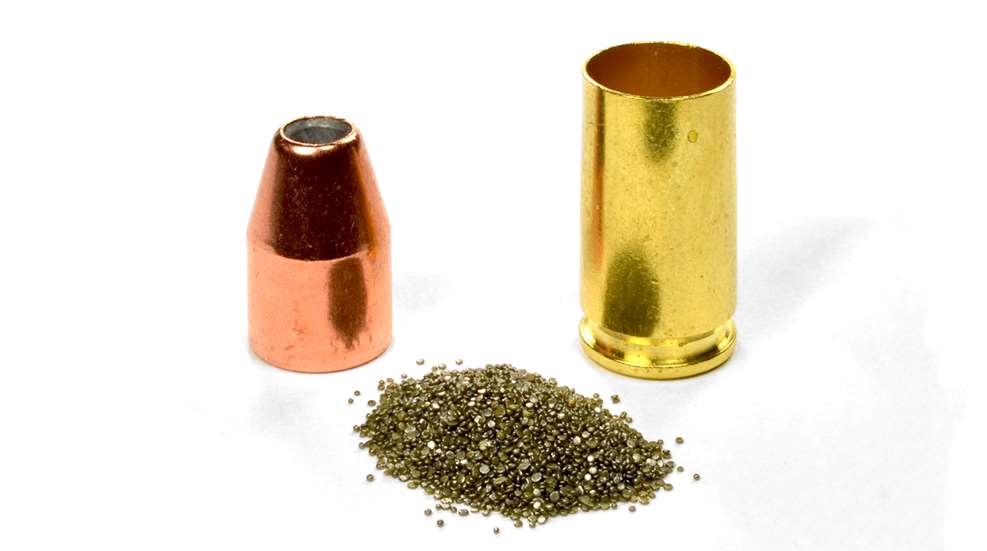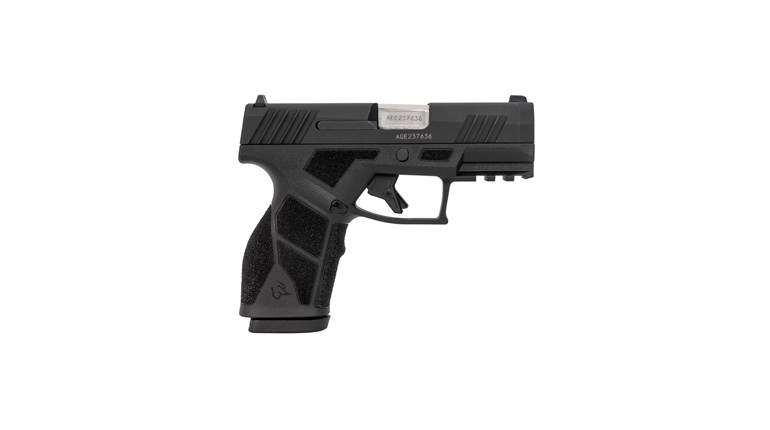
Nine Major is a 9 mm Luger (9X19) case loaded to make Major power factor for practical shooting competitions. It has become popular for Open division guns since the power factor was reduced to 165 (in USPSA) and the 9 mm Luger was no longer outlawed from this division. To be sure, a lower power factor increased the safety margin for this cartridge and other 9 mm/.38 caliber cartridges that are loaded to these power levels. The extremely high pressures associated with these rounds stress the gun and ammo to their practical limits.
Loading 9 Major is challenging because there are few sources for pressure tested load data that meet the power factor requirements. The pressure required for this type of performance often exceeds that established for the 9 mm Luger +P (38,500 psi), putting them into the “wildcat” category of +P+ loads.
Chamber pressure can get ridiculously high with estimates around 50,000 psi. This is certainly high for a semi-automatic pistol cartridge but not unheard of. The 9X23 Winchester has a maximum average pressure limit of 55,000 psi, and the .356 TSW’s SAAMI limit is 50,000. The latter round is similar to the 9 mm Luger in that it was designed to be loaded to the same overall length as the Luger and still make Major power factor.
Pressure is probably the most important concern when handloading 9 Major. Care must be taken to keep chamber pressure as low as reasonably possible for safety. To that end, here are some tips to help keep you, your gun and ammo safe and happy.
Tip 1. Load long. The SAAMI maximum overall length of the 9 mm Luger is 1.169-inch, and loading as long as possible will help to keep pressures down. There are some limits here depending on your gun and platform. Overall length might be limited by the gun design, such as those designed around the 9 mm Luger cartridge length, like a GLOCK, CZ or M&P, which are forced to limit overall length to what will fit in the magazine. Some of my GLOCK magazines will allow a round nose bullet loaded to maximum length, but flat nose bullets have to be limited to an overall length of 1.150-inch to fit freely in the magazine without rubbing against the front wall and getting stuck.
Some chambers have notoriously short throats and limit the practical overall length that some bullet designs can be loaded to. Some CZ chamber throats are known to be short, and might require specific bullet profiles with long tapered noses to allow a long overall length. Some shooters have the chamber throat extended to fit a wider range of bullet designs, and a lengthened throat itself helps to reduce pressure.
Guns that can accommodate a longer cartridge length, such as 1911s/2011s that can fit a cartridge such as a .38 Super, might allow you to load longer than the 9 mm’s prescribed length limit. Indeed, with some bullet designs, 9 mm cartridge overall length can exceed 1.200-inch. This, of course, depends on whether you are using a .38 Super length magazine, since some of these guns’ magazines have spacers that limit rounds to nominal 9 mm length.
One consideration when loading long is how much of the bullet shank is in the case. Enough length of the bullet has to be in the case to ensure that it is held firmly in place so it doesn’t get knocked loose and fall out during the feeding process! Yes, this can happen. You need the bullet deep enough, and with enough neck tension, to prevent this. Short, light weight bullets might not allow you to load very long for this reason.
Tip 2. Speaking of neck tension, you want plenty of it to prevent setback. If the bullet is pushed deeper in the case during feeding, pressure will go up. Since we’re often already at extreme pressure, we don’t want to unnecessarily increase it into the danger zone. If you’re having issues with poor neck tension, try a different brand of brass or look into the possibility of an undersized sizing die.
Pressure can increase considerably even with minor changes in overall length. For example, I recently loaded some 9 mm ammo with the same bullet at different lengths to test the effect on accuracy. It was a 125-grain jacketed bullet powered by the same charge of Accurate #7 loaded to two different lengths, 1.100-inch and 1.115-inch. The 0.015-inch deeper seated load increased velocity by a surprising 85 fps―10 full power factors―equal to a change of at least 0.5-grains of this powder. I don’t know how much pressure was increased, but it was not a trivial amount.
Tip 3. Slow powder. Not all powders are suitable for 9 Major because they burn too fast and peak chamber pressure would be too high. Suitable powers are medium to slow pistol powders. Slower powders have an advantage because they can usually produce the desired velocity at lower pressure. They also generally require a little more charge weight, and more gunpowder means more gas for the compensator.
Some gunpowders, like 3N38, can make Major power factor and stay within established pressure limits. Vihtavuori’s load data for the 9X21, which can be used for the 9 mm Luger, shows a maximum load with 3N38 and 115-grain bullets that make Major power factor. It even makes Major from my 4.6-inch Lone Wolf barrel in a GLOCK 19.
3N38 tends to fill a 9 mm Luger case nearly full when using 115-grain bullets, and some spillage can occur when indexing on progressive presses. There are ways to get around this, but some folks opt for powders that fill less of the case for this reason.
Some shooters have noticed that their loaded rounds will lengthen over time if they are using powders that have been compressed. This might depend on the powder, bullet, brass, neck tension, crimp and how long ago they were loaded. It’s something to watch for if you’re compressing your powder. If they grow too much they might not fit in the magazine or chamber, which will depend on your tolerances.
Tip 4. Know your brass. The brass is the weak link in 9 Major, especially when combined with chambers that do not offer support all the way to the extractor groove. Many chambers leave a little bit of the case head exposed, but most brands of brass are strong enough to hold even excess pressures. Still, you need good case support. Make sure your barrel is properly designed for the task.
Be sure your brass is good quality and in good condition. An over-used or weakened case is all it takes to ruin your day when it unexpectedly gives way with your high pressure load. It’s always dicey to use range pickups for 9 Major since you don’t always know the history of the brass. Having a 45,000-plus psi case blowout will change your way of thinking very quickly while you’re making sure you can still see and counting your fingers to make sure they’re all there. I had this happen with a range pickup, and quickly changed my policy about using unknown brass. If you have any questions about your brass, throw it out. This includes brass for use in standard pressure loads.
Nine Major is a useful competition cartridge but requires a sensible approach to load it safely. Develop your loads with safety in mind so you can continue to enjoy this wonderful sport.



































